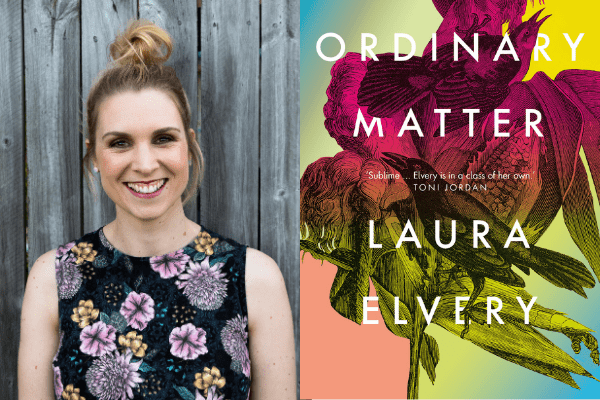The first Nobel Prize for science was awarded in 1901, with the first woman, Marie Curie, being awarded the prestigious prize two years later. Since then, female scientists have been accoladed only twenty times more.
Today, we mark the 6th International Day of Women and Girls in Science by chatting with author Laura Elvery, whose book ‘Ordinary Matter‘, looks at the twenty women trailblazers in their field of science dominated by men.
According to the UN, less than 30 per cent of researchers worldwide are women and only 30 per cent of girls select STEM-related fields in tertiary education. Conventional ideas about who gets to do science and who doesn’t continues to discriminate women, and discourages them away from choosing careers in the field. It also doesn’t help that in Hollywood, onscreen characters who play scientists or other STEM-related jobs are mostly men — 82 percent, in fact.
Laura Elvery’s book hopes to change these realities. A book of stories, ‘Ordinary Matter’ celebrates and shines a light on the valuable contribution of female scientists who have long been under-recognised.
Last September, Elvery told Booktopia in an interview that someone like Gertrude Elion, the Nobel laureate for Physiology and Medicine in 1988, should be “as famous as [Jonas] Salk or [Alexander] Fleming.”
“Elion was inspired to work in the medical field after her grandfather became sick with cancer, when she was a teenager,” Elvery explained.
“By all accounts Elion was an outstanding student, a real genius, but for years she couldn’t find a career in research commensurate with her skills. But she was determined, and she worked a range of jobs, including in a supermarket chain’s food lab. Finally, her work was recognised – this rather ‘ordinary’ woman from New York City.
“In my mind, Elion should be as famous as Salk or Fleming. Her new approach to drug design led to treatments for leukaemia, herpes, organ transplant, cancer, malaria, and AIDS that have saved the lives of literally millions of people.”
Elvery wants readers to follow up on these women after reading her book.
“I hope readers might be interested enough to go find out what else these women did,” she told Booktopia. “Some of the obstacles they overcame are utterly inspiring, and the way they inspired others is pretty great too.”
1. ‘Ordinary Matter’ is an interesting title. How did you land on that?
Titles for short stories tend to come to me immediately or outrageously late. I can’t remember where or when it was I settled on the collection’s title, a title I hope reflects both the physical concept of ‘ordinary matter’ as well as women who lived complex lives moving in and out of normalcy and domesticity and mundane work as well as high praise and fame and eureka moments. I also fell in love with how the title looks on my cover – I love a title beginning with O.
2. What fascinates you about science?
The further I get away from high school, the more I wonder if I should have pursued science more, or at least paid better attention in class. I did extension science in the first couple of years of school, then Biology in senior and that’s about it! Since giving birth to my babies I’ve become fascinated in labour and the body in that sense. I’m not an expert in anything but send me a link to a science article and I’m pretty much fascinated by it all.
3. Why did you choose these stories and not others? And why did you decide to fictionalise it?
I took about three years to write ‘Ordinary Matter’ and by the time I submitted the manuscript, women had been awarded the Nobel Prize in the sciences twenty times (men were hovering around 600). So the women at the centre chose themselves in that sense, but deciding which story to tell for them was the fun part. For scientists like Marie Curie or Dorothy Crowfoot Hodgkin or Tu Youyou or, most recently, Frances Arnold, I had so many notes and ideas for directions each of their stories could have taken. I just had to focus on one! Much of my research is off the page – my interest was always in using their lives and discoveries as inspiration for fiction.
4. What was the most challenging part of writing these stories?
Holding my nerve. I wrote the stories in Ordinary Matter out of order. The most challenging part was not giving up when I could see (I kept a sort-of-spreadsheet to track the progress of each woman’s story) which ones would need re-doing, which ones I hadn’t started, which stories I was still clueless about. It’s always about perseverance for me.
5. Have you ever had a mentor in your life? What did they provide you?
The wonderful writer and editor Ashley Hay was my mentor when I set out to write Ordinary Matter. We talked about shaping the collection and what I wanted it to be – before I did much drafting at all actually. The best thing I got out of it? Ash convinced me that whatever I wanted to try at that moment was the right thing to try. I think in those early days having somebody who says Yep, that sounds great, give it a go, see where it takes you is worth their weight in gold.
6. What advice would you give to aspiring young authors?
Teach yourself how to be resilient and thick-skinned, while still being good and generous to other writers.


